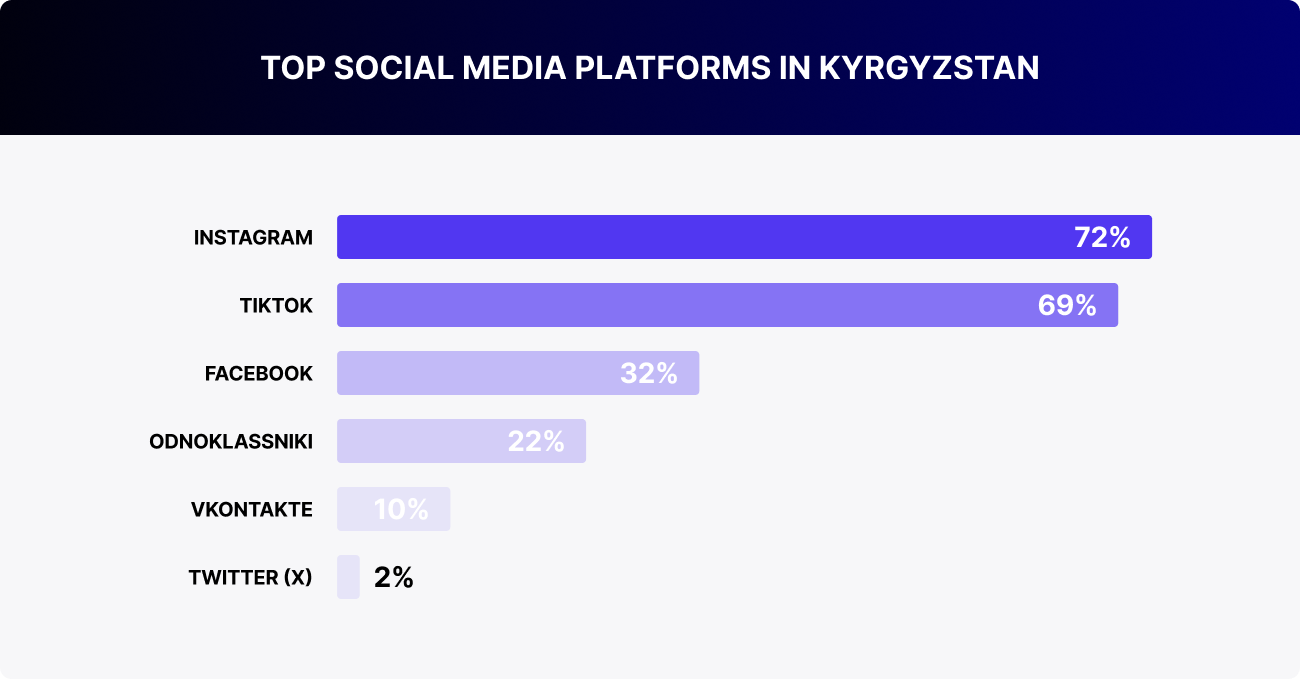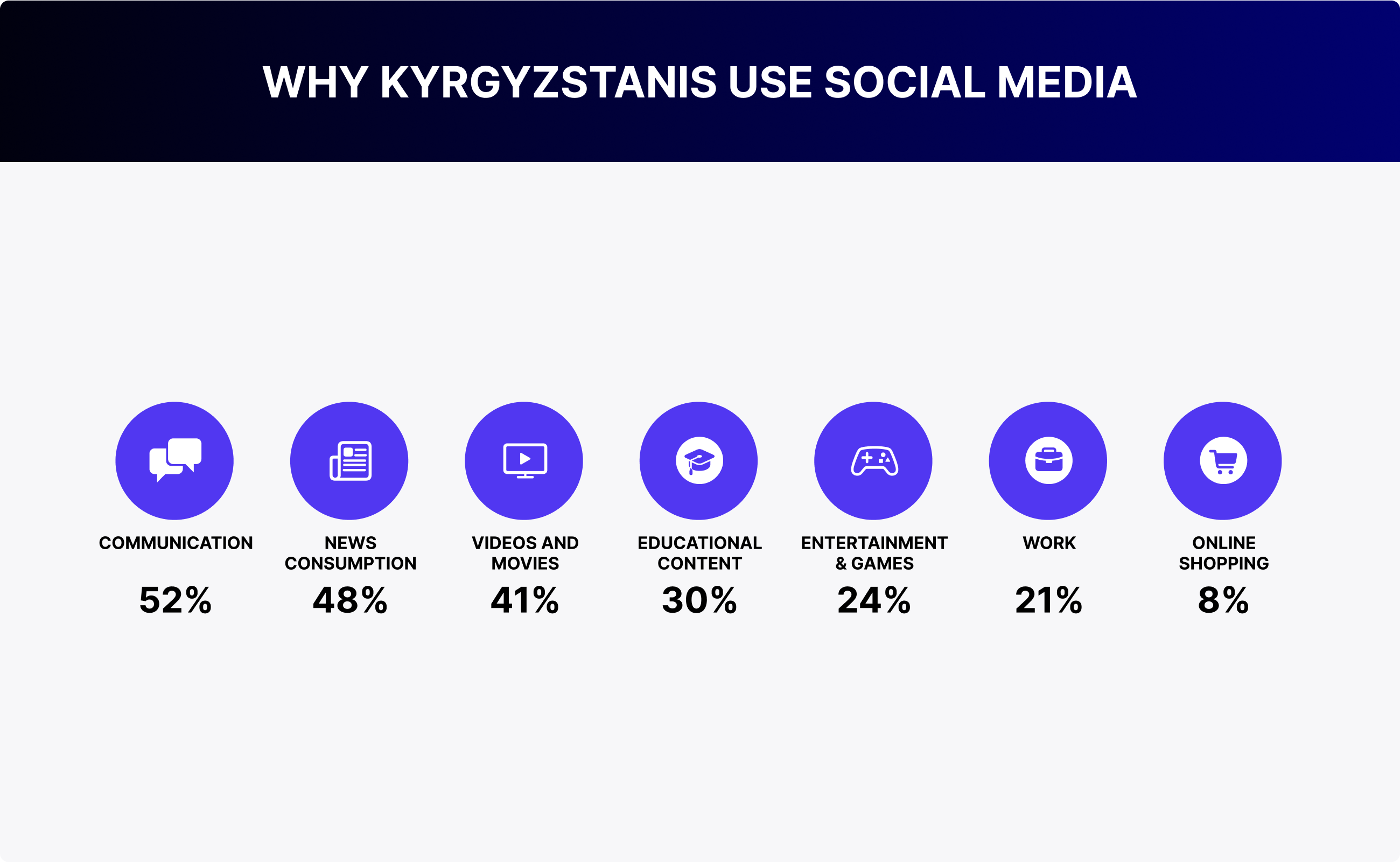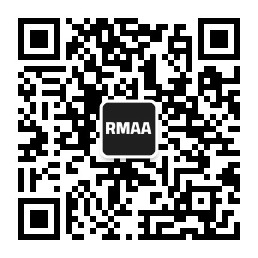Blog about successful marketing strategies in russia
Top Social Media Platforms in Kyrgyzstan: Reach, Audience Behavior & Promotion Tips


DIGITAL MARKETING
Share this Post
Kyrgyzstan is a small country, but not a small market. With a population of 7.2 million, 88% internet penetration, and nearly 160% mobile connection rate compared to the number of residents, Kyrgyzstan is emerging as a rapidly growing digital cluster in Central Asia. Every second person is already on social media, and mobile internet coverage extends across virtually the entire country.
At the same time — and this is key — the structure of media consumption here is vastly different from conventional patterns. Social media platforms are replacing traditional communication channels, especially outside the capital. For international brands, this means social platforms aren’t just a place to advertise — they’re often the only gateway to the audience.
But entering the market isn't enough. To be heard, brands must understand how people in Kyrgyzstan consume content — where they spend time, why they use Instagram or TikTok, and what language feels natural versus alienating. This is particularly critical for retail, FMCG, education, and service brands that depend on real engagement rather than image-based visibility.
For brands entering the country, it's not just the numbers that matter — it's the logic behind media behavior. In a market where Instagram and TikTok reach up to 70% of the audience, and every second user consumes content in Kyrgyz, there is no such thing as a one-size-fits-all approach.
Kyrgyzstan is a young, flexible, and fast-changing market. Success depends on the details — which platforms people choose, how much time they spend online, and which language they connect with emotionally. Miss these nuances, and even a well-funded campaign can fall flat.
The platform defines the format. Language creates an emotional connection. Age and context determine whether you earn trust or lose it. That’s why a media strategy in Kyrgyzstan shouldn’t revolve around where it’s cheapest to run ads, but around who your audience is, how they process information, and why they choose certain brands over others.
Top Social Platforms in Kyrgyzstan: Who’s Competing for Attention
Instagram and TikTok are the undisputed leaders in Kyrgyzstan. This isn’t just a trend — it’s part of everyday digital life. These platforms are where habits are shaped, challenges go viral, purchases are made, and news is discussed.
- Instagram — 72%
- TikTok — 69%
- Facebook — 32%
- Odnoklassniki — 22%
- VK — 10%
- Twitter (X) — 2%

Facebook and Odnoklassniki are gradually losing ground, and it’s not just about the age of their users. These platforms are poorly adapted for mobile content, lack support for fast, dynamic formats, and visually fall short compared to TikTok and Instagram. For younger users, they feel outdated: cluttered, heavy, and associated with formal, institutional content.
That said, these networks still retain dedicated audiences. Facebook remains a working platform for service companies, NGOs, and business communities. Odnoklassniki continues to serve regional and older audiences, especially in categories like everyday products and household services. VKontakte and Twitter sit on the periphery. VK maintains a segment of the Russian-speaking youth, while Twitter is used more selectively, mostly as a news source or for its ironic, commentary-driven tone.
For brands entering the Kyrgyz market, the starting point is clear: Instagram and TikTok. These are the platforms where attention, trust, and daily engagement are currently concentrated.
What Language Does the Audience Speak
In Kyrgyzstan, language is more than just a communication tool, it's a cultural marker. It shapes whether a brand feels familiar and trustworthy or distant and irrelevant. There’s no single ‘universal language’ that works for everyone here. Choosing between Kyrgyz and Russian is a strategic decision: it defines who you're speaking to and who genuinely cares about your message.
Here’s how language use breaks down across social media:
- Kyrgyz — 52%
- Russian — 44%
- Uzbek — 3%
- English — 1%
Kyrgyz dominates in the regions and among younger users. It sets the tone on TikTok and builds local loyalty. Everyday videos, jokes, and casual conversations happen in Kyrgyz. And importantly, not all Kyrgyz-speaking users read Cyrillic with ease. Many rely on audio, and when it comes to text, they respond better to simple, visually clean formats. If a post is too wordy, uses complex typography, or features a cluttered banner, it risks losing that audience, even if it's in the ‘right’ language.
Russian remains strong in Bishkek and among older demographics. It’s the preferred language on Instagram and for media, education, and business-related projects. It continues to serve as the working language for professional, tech, and entrepreneurial communities. But even here, localization is crucial. What resonates in Moscow or Almaty won’t necessarily land the same way in Bishkek — the tone, context, and user expectations are different.
Uzbek and English have minimal reach. Uzbek appears in select southern areas, while English is confined to niche groups — IT professionals, young urbanists, or specific educational initiatives. These languages only make sense for highly targeted campaigns.
Social Media Behavior: How Much Time, For What Purpose, and With What Focus
In Kyrgyzstan, social media is a constant backdrop to daily life. One in three users spends between two to five hours a day online. Another third is active for one to two hours. The rest either check in briefly (under an hour) or are online almost constantly, scrolling on their phones during commutes, classes, or while waiting in line.
Main reasons for using social media:
- Communication — 52%
- News consumption — 48%
- Watching videos and movies — 41%
- Educational and informative content — 30%
- Entertainment and games — 24%
- Work-related use — 21%
- Online shopping — 8%

Peak activity times are in the morning (around 7–9 AM) and in the evening (after 6 PM). In the morning, users quickly scan Stories and news feeds. In the evening, they’re in a relaxed mode — watching videos, scrolling through TikTok, and reading comments. Throughout the day, they return to social apps in short bursts, during breaks at work or between tasks.
Almost all traffic comes from mobile devices. Desktop usage is minimal and mainly tied to Facebook or LinkedIn, typically among office workers. This makes it essential for branded content to be optimized for vertical formats, concise structure, and the visual language of Stories and short videos. Graphics that look like slides or were designed for websites simply don’t work.
A typical user behavior pattern looks like this:
Stories → Video → Feed → Comments. And only after it, attention to Ads comes.
If a brand speaks in its own voice rather than the voice of the platform, it loses. If the format feels out of place, it gets swiped past without a chance. On the other hand, when an ad flows naturally with the rhythm of the feed, feels visually native, and connects through context rather than just a headline, it has a real chance to be noticed.
Age-based differences are also significant. TikTok has long moved beyond just teens. It’s actively watched by women 30+ as well, especially in the regions. Recipes, local memes, and everyday stories are particularly popular. Instagram remains the platform of the 18–34 age group, but is steadily growing among older users too. Facebook is for users 35+, particularly in Bishkek, and is used by IT professionals, NGOs, and government employees. Odnoklassniki attracts an older, more regional audience. VK is driven more by habit than activity. Twitter is niche and mostly used for observing, not engaging.
Today, brands aren’t competing with other brands — they’re competing with habits: with memes, neighborhood videos, and Stories set to music. Just having a presence on social media isn’t enough. What matters is the timing of contact, the device the user is on, and the rhythm of how content is consumed.
How Brands Engage Audiences on Social Media
SMM in Kyrgyzstan is all about creating connection through humor, local context, and relatable faces. Brands that succeed here treat TikTok and Instagram as spaces for dialogue, informal interaction, and quick, human responses. Below are examples where the strategy works — and one case that shows what not to do.
MegaCom
One of the country’s largest telecom operators, MegaCom has hundreds of thousands of followers and uses a mix of Instagram and Facebook. Their content strategy includes contests, giveaways, livestreams, polls, and engaging educational posts. New content is published several times a week. Posts are bilingual (Russian and Kyrgyz), allowing the brand to reach diverse audience segments. Emphasizing local holidays and events helps build loyalty.
They use a variety of formats, from Stories and standard feed posts to short comedy skits featuring employees, often playing out workplace scenarios and office humor.
One such post — ‘When you worked harder to get a raise but they raised your KPIs instead’ — received over 1,100 likes and organically turned into a meme. Consistent presence in the feed makes the brand both recognizable and engaging.
Kulikovskiy
Though originally a Russian brand, Kulikovskiy is deeply embedded in the daily life of Kyrgyz consumers. TikTok and Instagram are its core channels. The content focuses on behind-the-scenes glimpses, dessert reviews, and visually rich storytelling. While the language is Russian, the cultural cues are local, from traditional holidays and familiar flavors to partnerships with Kyrgyz influencers.
The brand frequently works with local content creators and public figures. For example, popular TikTok creator @Molodaya Ezheshka filmed a video titled ‘A Tour of Kulikovskiy’, humorously showcasing how desserts are made and highlighting the café’s atmosphere. The format feels more like entertainment than advertising, which boosts trust and drives engagement.
@berdibaeva_aziza Моя экскурсия в @Куликовский #торты #еда #куликовский #десерты #обзорыеды #кыргызстан #казахстан ♬ original sound - Молодая Эжешка
Illusion (Park Chain)
Illusion’s social media strategy centers on emotional, people-focused content. TikTok videos are filmed by the staff themselves — animators, administrators — making it feel more like storytelling than advertising. And it works. The videos are shot in Bishkek, with the people on screen speaking both Russian and Kyrgyz.
Posts come out several times a week. The formats include behind-the-scenes mini-stories, quizzes, educational clips, and humor-driven content. This authentic approach builds trust and makes the brand feel like a familiar part of the community.
@illuzion.kg #illuzion #illuzionkg #illuzionbishkek #tiktokbishkek #bishkek #vefacenter #cosmopark ♬ оригинальный звук - Illuzion.kg
Wasabi Sushi Bar
With 146,000 followers on TikTok and hundreds of thousands of views, Wasabi wins attention through humor. The videos take viewers behind the scenes of the kitchen and dining area, showing everyday mishaps, staff moments, and playful takes on restaurant life. Localization feels natural: everything is filmed in Bishkek and taps into local realities.
Sometimes, the brand breaks out of the usual setting. In one video, for example, a Wasabi employee prepares sushi outdoors, eating it in the mountains of Kyrgyzstan. This expands the brand’s context and visually ties it to the country.
There are few official promos, yet engagement remains high. The content leans heavily on memes and serial-style storytelling. People follow the account just to keep watching what comes next.
@wasabi_kg Красиво?
Di_Store (Cosmetics)
Di_Store’s content is a blend of helpful and viral — product reviews, before-and-after clips, trending sounds, and challenges. Their TikTok account consistently racks up views. The target audience is women aged 18–34. The language is Russian, but the content reflects Kyrgyz trends and local holidays.
Posts go up almost daily. While the formats vary, they always stay rooted in themes of beauty and self-care. The strategy hinges on balancing value with entertainment, and it works.
@di_store_kg Матирующие салфетки самая нкжная вешь в любой сумке
YAKA — An example to avoid
The Russian clothing brand YAKA attempted to tap into Kyrgyz identity and ended up in a reputation crisis. In May 2025, the brand posted visuals featuring Kyrgyz ornaments and the phrase ‘100 Years of the Kyrgyz Republic’ — a factual error, as the Kyrgyz Republic was established in 1991. The backlash was immediate: widespread criticism and accusations of cultural appropriation. Designers and media outlets responded harshly.
YAKA’s mistake wasn’t in trying to localize. It was in showing disregard for accuracy and cultural respect. Their social media campaign turned into anti-advertising.
Effective SMM strategies are built on active dialogue with the audience. That means using a relatable tone (including Kyrgyz language), weaving everyday life into the content (behind-the-scenes, staff stories, real-life moments), and integrating interactive formats (contests, challenges, collaborations).
That’s exactly how MegaCom, Kulikovskiy, Illusion, Wasabi, and Di_Store operate. And they get strong engagement as a result.
If you’re planning to enter the Kyrgyz market, RMAA Group can help tailor your strategy to match the real behavior patterns of the local audience. We work at the intersection of local insight and global expertise to ensure your brand not only shows up but also works in this new environment.
The contact form is at the bottom of the page.
Subscribe to our blog for honest analysis and real-world solutions for growing your brand across CIS markets.
Join 2,000+
of your Peers!
You will be the first to know about Russian marketing insights, news and updates from our agency. Stay tuned!
Get our latest articles delivered to your email inbox and get our exclusive White Paper
"Digital Marketing in Russia. Finding your customers on the internet"
for FREE!
Russian Digital Market Overview
Strategic Insights into Russian Digital Marketing Landscape

Ready to partner with the specialists in Russian marketing and advertising?
About the Author
Digital Strategist. Head of one of the project groups at RMAA. Maria started her journey in digital marketing in 2009.
Join 2,000+ of your Peers!
Get our latest articles delivered to your email inbox and get our exclusive White Paper "Digital Marketing in Russia. Finding your customers on the internet" for FREE!
You will be the first to know about Russian marketing insights,
news and updates from our agency.
Stay tuned!
We're updating our website's design step by step, so some pages may look different. Thank you for your understanding.
Got it














